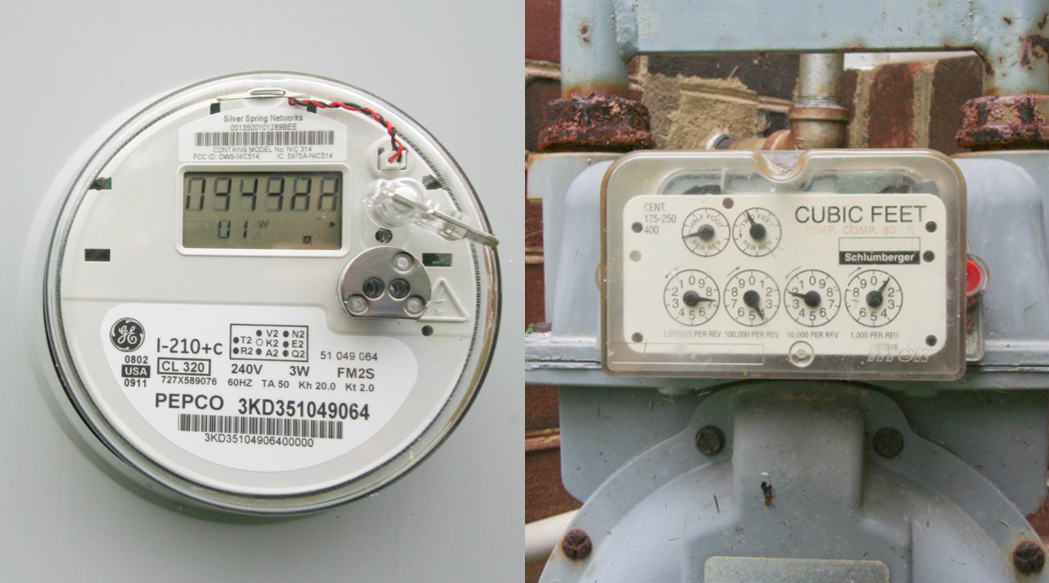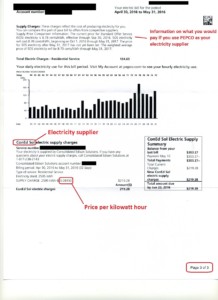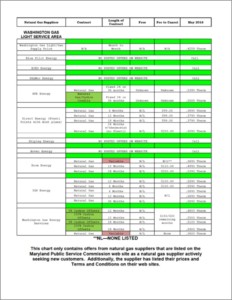Do you live in Maryland? Are you using alternate energy suppliers for your electricity and natural gas? If yes to both, congrats, you’ve already figured this out – no need to read further. 🙂
Otherwise, if you’ve never switched from your “standard offer provider” for electricity (e.g., PEPCO, BGE, etc.) or for natural gas (e.g., Washington Gas, BGE, etc.), then read on for how to potentially cut, on average, 10% – 15% or more off your utility bills.
Another opportunity by switching is, for electricity, you can buy electricity from renewable sources. For natural gas, a few suppliers offer the opportunity to purchase carbon credits with your natural gas, to partially or completely offset the carbon dioxide that’s produced.
It takes a little extra effort and vigilance to take advantage of electricity and natural gas deregulation. But, it can be worth it, both to save money and/or to use green(er) energy.
How to Do It
1 – Identify how much you’re currently paying for electricity and natural gas. You’ll find this information on your bills. Here are excerpts from my own recent bills:
2 – Determine what prices and plans alternate suppliers are offering. An easy way to do this is via the website for the Maryland People’s Counsel, an independent state agency with the mission to “represent the interests of residential consumers of electricity, natural gas…”
http://www.opc.state.md.us/ConsumerCorner/RetailSuppliers.aspx
On this page, click on the service area for your home, for electricity and for natural gas. This will bring up a pdf for each, which is updated every month by the Maryland People’s Counsel, listing all of the licensed suppliers you can choose from, and their current plans and pricing.
Here are examples from May 2016 listing a) electricity prices and plans within the PEPCO service area, and b) natural gas prices and plans within the Washington Gas service.
4 – On your next utility bill, check to be sure that you have the supplier and price you selected. Keep in mind that it takes a month, sometimes a little longer, for a switch to a new supplier to happen (it has to happen after the next meter reading). So, it might be two utility bills before you see your new supplier and/or new price appear.
Important Recommendations
NEVER CHOOSE A “VARIABLE PRICE” PLAN. You’ll have to be checking every month to see what you’re being charged. Your price could change monthly. It seems that suppliers often jack up customers’ variable prices after a few months (in hope that you’re not paying attention?).
Take note of which plans have a cancellation fee. Typically, plans with a cancellation fee have lower prices. But, that’s not always the case. If two plans have the same, or nearly the same, price but one has no cancellation fee, choose that one. That way, you can switch to a different supplier/plan, with no penalty, if prices drop before your contract expires.
Put reminders in your calendar for a month before your contract will expire. If your contract expires and you don’t do anything, your supplier will move you to variable pricing, which will likely be disadvantageous (see above). Given that it takes at least a month for a switch to a different supplier to happen, if your soon-to-expire contract has a cancellation fee, then a month before your contract expires is the right time to switch.
Never simply renew with the same supplier without first checking competitors’ plans and prices. Suppliers constantly change their plans and prices. And, it’s common for at least one to be offering an attractive price to get people to switch to them.




